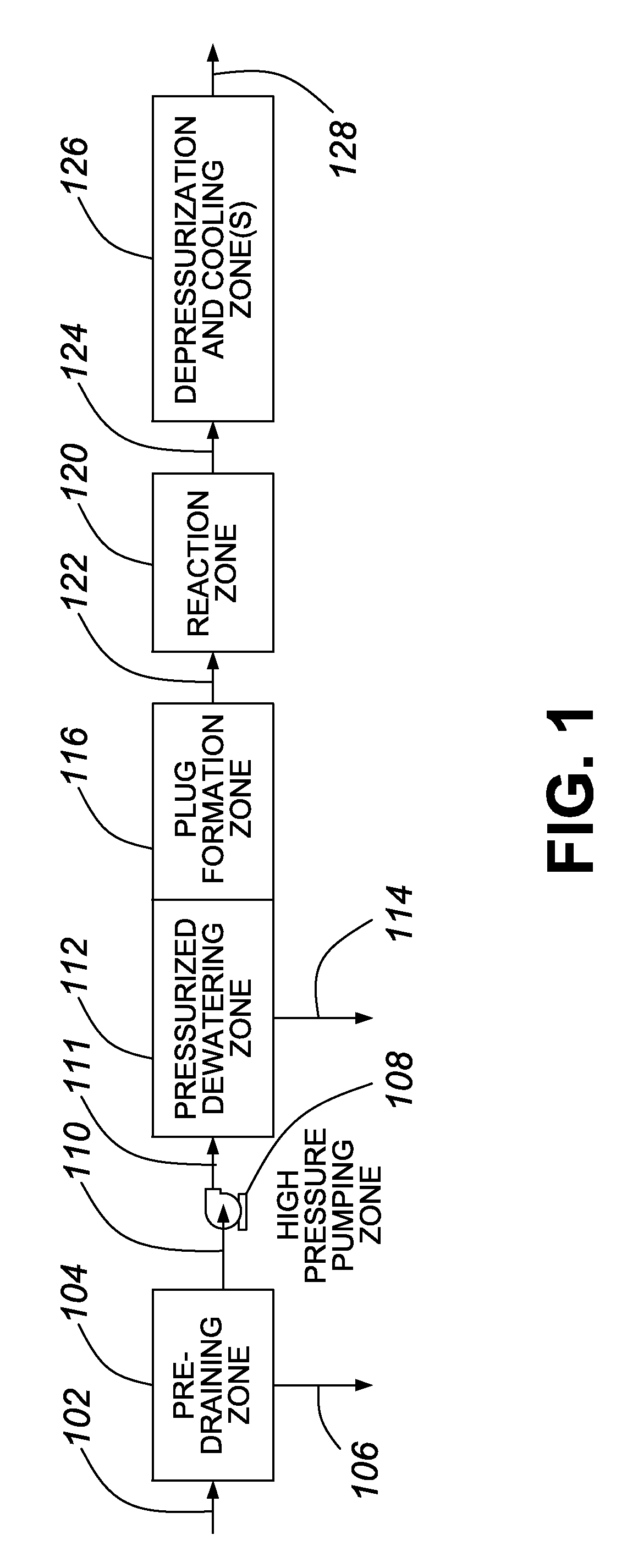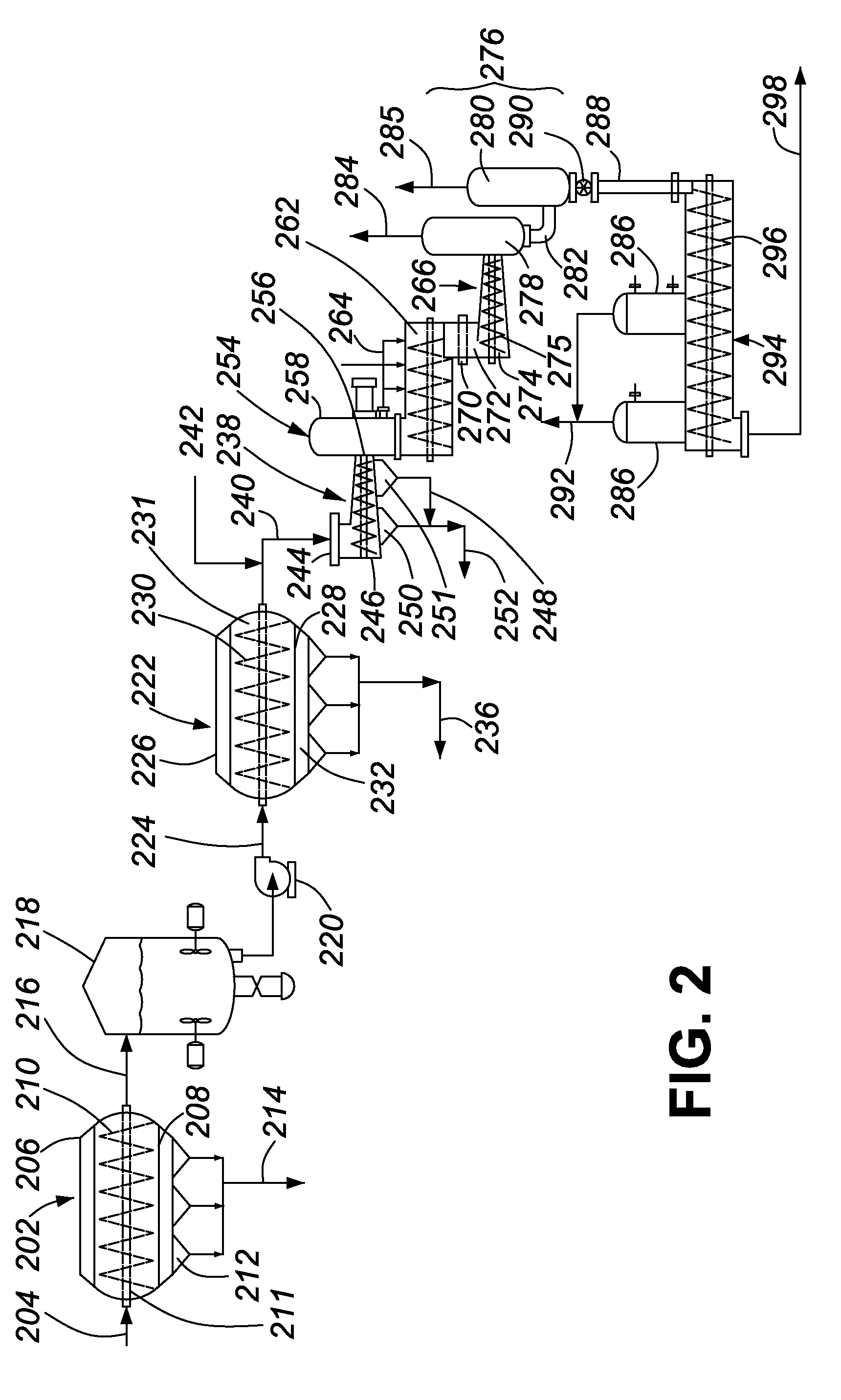Method for low water hydrolysis or pretreatment of polysaccharides in a lignocellulosic feedstock
a technology of lignocellulosic feedstock and polysaccharides, which is applied in the direction of sugar derivates, glucose production, separation processes, etc., can solve the problems of large steam heat-up, large cost, and limited size at which a batch steam explosion reactor can uniformly pretreat the material, so as to achieve significant capital and operating cost
- Summary
- Abstract
- Description
- Claims
- Application Information
AI Technical Summary
Benefits of technology
Problems solved by technology
Method used
Image
Examples
Embodiment Construction
[0079]The feedstock which is dewatered is a lignocellulosic material. By the term “lignocellulosic feedstock”, it is meant any type of plant biomass such as, but not limited to, non-woody plant biomass, cultivated crops such as, but not limited to, grasses, for example, but not limited to, C4 grasses, such as, but not limited to, switch grass, cord grass, rye grass, miscanthus, reed canary grass, or a combination thereof, sugar processing residues, for example, but not limited to, bagasse, beet pulp, or a combination thereof, agricultural residues, for example, but not limited to, soybean stover, corn stover, rice straw, rice hulls, barley straw, corn cobs, wheat straw, canola straw, oat straw, oat hulls, corn fiber, or a combination thereof, forestry biomass for example, but not limited to, recycled wood pulp fiber, sawdust, hardwood, for example aspen wood, softwood, or a combination thereof.
[0080]Furthermore, the lignocellulosic feedstock may comprise cellulosic waste material or...
PUM
| Property | Measurement | Unit |
|---|---|---|
| temperature | aaaaa | aaaaa |
| temperature | aaaaa | aaaaa |
| temperature | aaaaa | aaaaa |
Abstract
Description
Claims
Application Information
 Login to View More
Login to View More - R&D
- Intellectual Property
- Life Sciences
- Materials
- Tech Scout
- Unparalleled Data Quality
- Higher Quality Content
- 60% Fewer Hallucinations
Browse by: Latest US Patents, China's latest patents, Technical Efficacy Thesaurus, Application Domain, Technology Topic, Popular Technical Reports.
© 2025 PatSnap. All rights reserved.Legal|Privacy policy|Modern Slavery Act Transparency Statement|Sitemap|About US| Contact US: help@patsnap.com



